The Art of Creation: Advent Hope
December 1, 2022 - I wonder if this Advent, those of us in more comfortable places who have much within our grasp: relative affluence, security and power, might think less about our own need for hope and more about being agents of hope to others. By Louise Conner
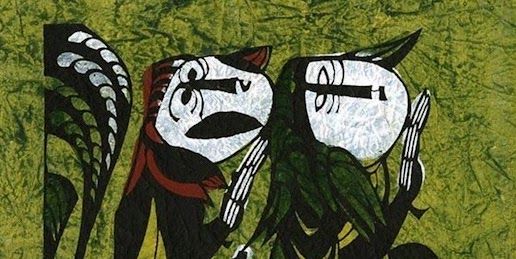
Hope, the traditional first theme of Advent, is a recurring topic right now. Hope—or our lack thereof—is a common strain of conversation in this time of political division, global threats, and climate challenges. Although I am touched by all the aforementioned problems, for the most part, it is others (both human and nonhuman) who are experiencing the brunt of these realities. I am part of a population that is less likely to be targeted for physical harm, possesses ample material resources, and lives in a part of the world less vulnerable to rising seas and spreading deserts.
When I think of those being targeted for violence because of their sexual orientation, being bombed for living in a place that a neighboring country wants to claim, or losing their homes and habitats under rising water from causes they themselves have little or no responsibility for, I rethink what it means to lack hope. Hope becomes more difficult when you are powerless.
I wonder if, this Advent, those of us in more comfortable places and who have relative affluence, security, and power, might think less about our own need for hope and more about being agents of hope for others. For followers of Jesus, this has always been a core call of discipleship and is a mindset worth cultivating.
This hope I am talking about is not a blithe reassurance that there is nothing amiss but is instead a hope modeled on Jesus' way of delivering hope, "He has sent me to bind up the brokenhearted/to proclaim freedom for the captives/and release from darkness for the prisoners/to proclaim the year of the Lord’s favor..." Isaiah 61.
Below, I offer some thoughts on ways we can offer hope, not by just announcing a light at the end of the tunnel, but by doing what we can to create that light at the end of the tunnel and to make the tunnel less dark. I include images from the highly regarded Japanese stencil artist Sadao Watanabe, who lived from 1913-1996 and created hundreds of large and small stenciled portrayals of biblical stories, in particular, stories from Jesus' life. He used traditional methods as well as traditional materials of organic and mineral pigments in soybean milk.
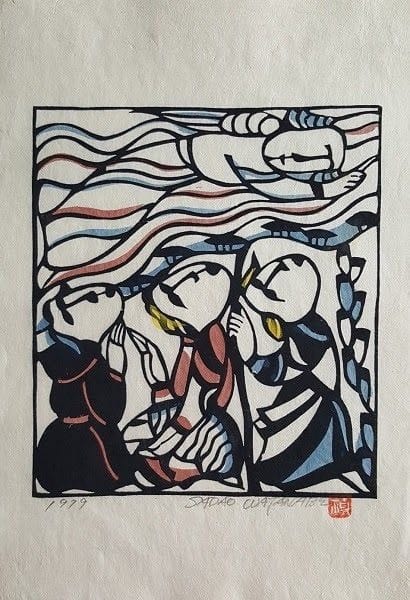
Pointing to hope
When we have a vision that directs us, it can imbue our circumstances with meaning, and enable us to move through difficult times with hope intact. The angels who announced Jesus' birth to the shepherds had news that would energize the shepherds to leave their work in the fields and go looking for something worth finding. It might even change their lives. If we have such a vision—that just might change the world for the better, one more aligned with God's values—we should share it with others. In fact, a big reason why I am part of Circlewood is that I believe in its vision.
Is there a vision that energizes you that you could share with others?
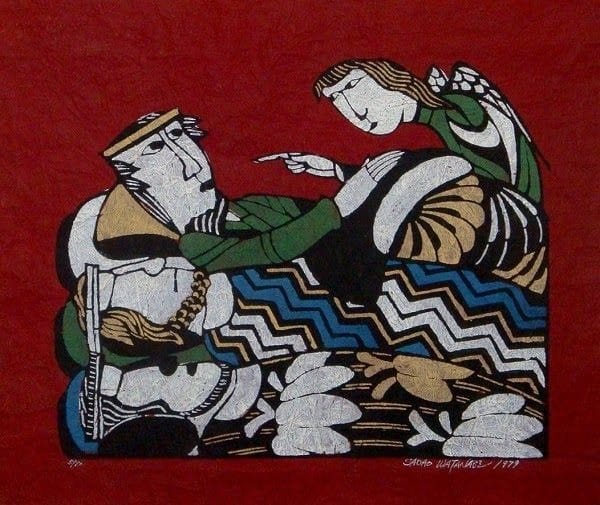
Protecting as you are able
When the magi are warned by an angel in a dream that Herod plans to harm the child Jesus, they do not add their knowledge to a power that would do evil. Instead of returning to him as he asked them to do, they remove themselves from the equation by "returning by another way." They refuse to turn over their own agency of choice to a power that wants to harm and destroy what they have come to value.
Are there ways in which you enable the powers around you to harm the human and nonhuman world that you value?
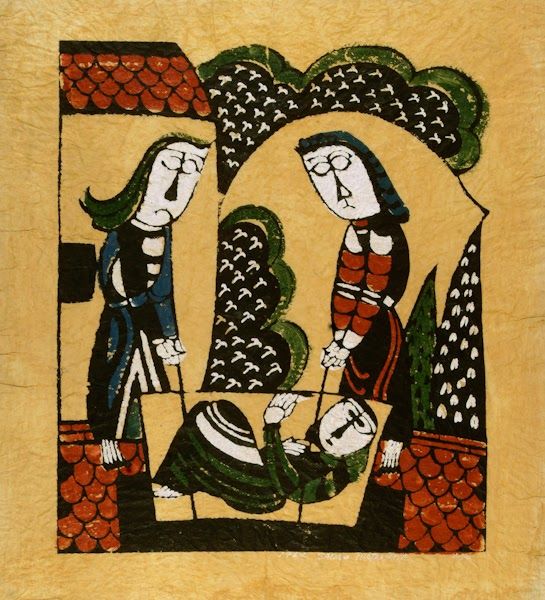
Advocating for others
In the gospels, when a paralytic's friends could not reach Jesus because of the crowds, they physically lowered him through the roof so that he could not be overlooked. Where others are experiencing injustice and undue suffering, we can use the power we have to bring their plight to the attention of those who can change things.
There are many people, creatures, and parts of this creation who do not have a voice to advocate for themselves. Is there one of these you feel particularly called to advocate for?
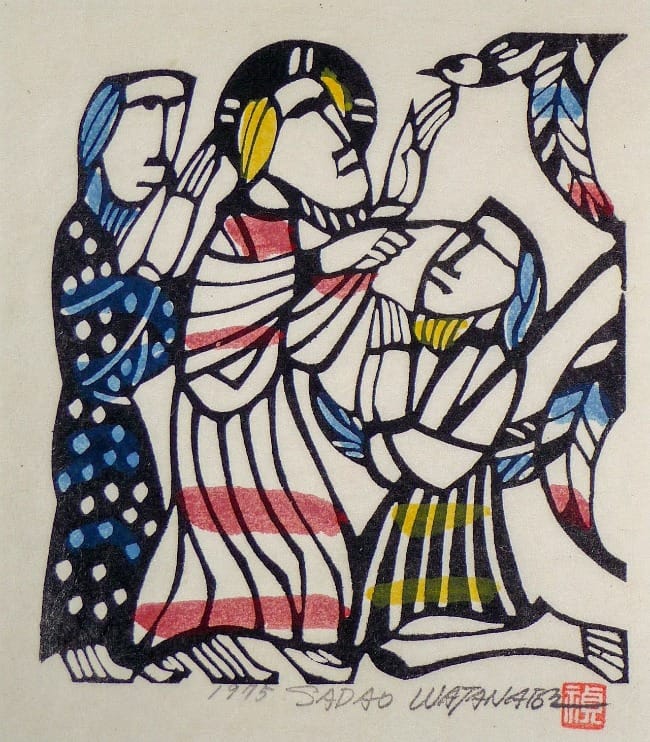
Alleviating suffering where you can
In the picture above, we see one of the many times when Jesus filled a need out of his own abundance. He chose to act, to heal, to restore. He came near to those who needed him and allowed those who knew they needed him to come near to him. He chose to fill physical needs as well as spiritual ones. When a woman touched his robe and was healed, he felt power leave him, so we know that when he healed people, it took something out of him.
We all know we can't do everything and that the work to alleviate suffering can't depend solely on us. Is there a step you might take to alleviate the suffering around you?
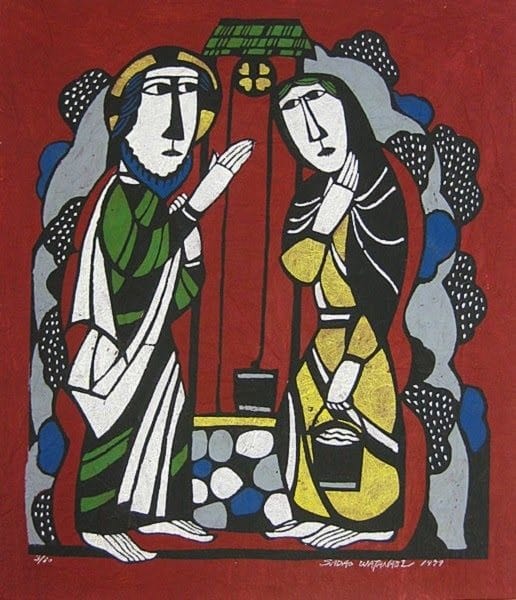
Remembering the forgotten
When circumstances continue for a long time, it is easy for those not directly involved to lose interest. Circumstances may remain the same; the suffering hasn't decreased, but we our attention wanders away from that particular storyline. We may need reminders that bombs are still being dropped in Ukraine and that entire species are becoming extinct. In the human realm, as the Samaritan woman in the picture above found out, having someone acknowledge your story can be transforming and hope-giving. In the nonhuman realm, we'll know we have created hope when there is a community of caring around that perhaps voiceless part of creation.
Where do I see a fellow creature's hope waning? What can I do to help them not be forgotten?
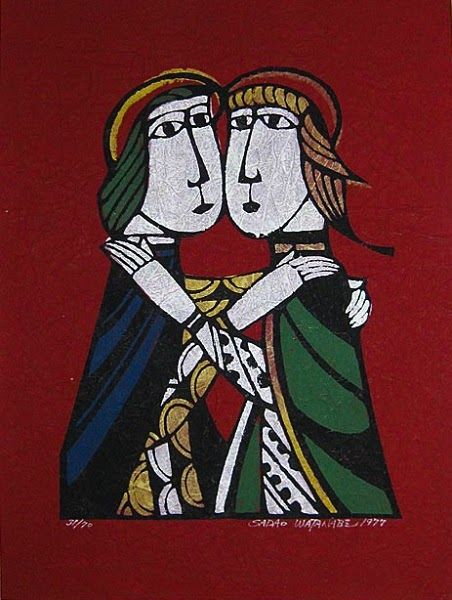
Being in it together
Sometimes all we can do is be with others in their experience. When Mary visited Elizabeth, I can only imagine how significant it was for this young, unwed, pregnant teen to feel less alone. To be with someone who, though she was in very different circumstances, was herself in the midst of an impossible pregnancy, living out a wild prophecy from God, had to have strengthened Mary's hope that God was truly in the midst of her story. To have Elizabeth affirm Mary's baby through the movement of her own baby must have fortified Mary's hopes for the baby she was bearing.
When has your hope been strengthened by someone else's presence with you? Is there someone who needs you to be with them in their suffering? Is there a nonhuman part of nature you might sit with and rejoice or grieve with?
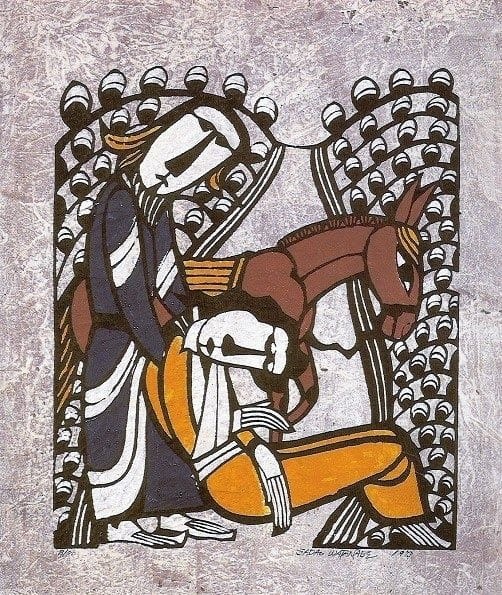
Valuing kindness
Finally, when we tell and glory in stories that promote fear of the other, self-protection, and a spirt of retaliation, we build a value system in which those characteristics are the foundation. When we tell stories that promote kindness, self-giving, and generosity, we build a very different foundation. The story of the Good Samaritan (pictured above), is a story about a hero who opens his eyes to suffering and is willing to do what is inconvenient in order to bring hope to someone unlike himself. This world is full of creatures unlike ourselves who need our kindness.
What values do you promote with your stories? Is kindness toward those who are different from them an attribute you value in your heroes?
Hungry for Hope
The world seems particularly hungry for hope this year. I wonder if any of the ideas from this post (listed below) is one you particularly want to participate in this Advent.
- Point to hope
- Protect as you are able
- Advocate for others
- Alleviate suffering
- Remember the forgotten
- Be in it together
- Value kindness
To leave a comment, click in the comment box below, or email me at info@circlewood.online.
Louise


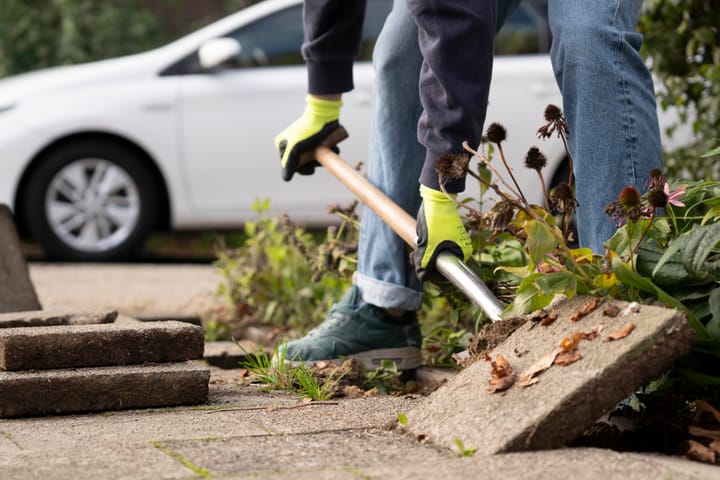

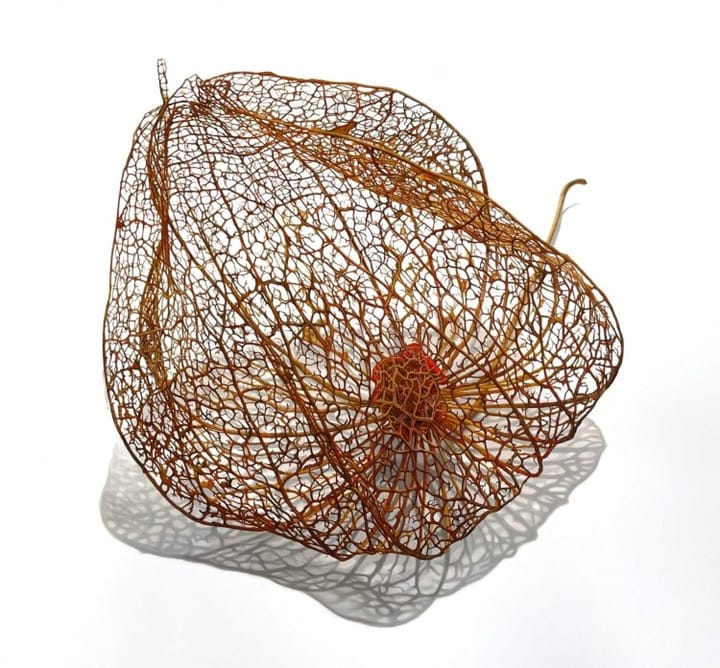
Comments ()